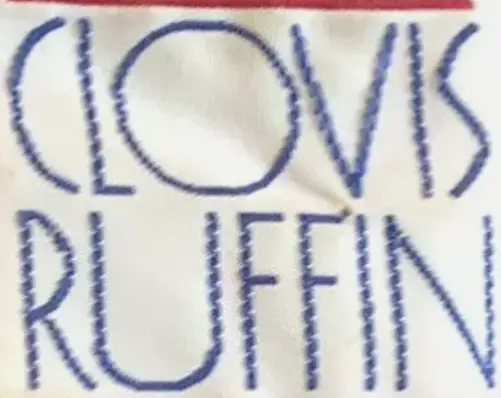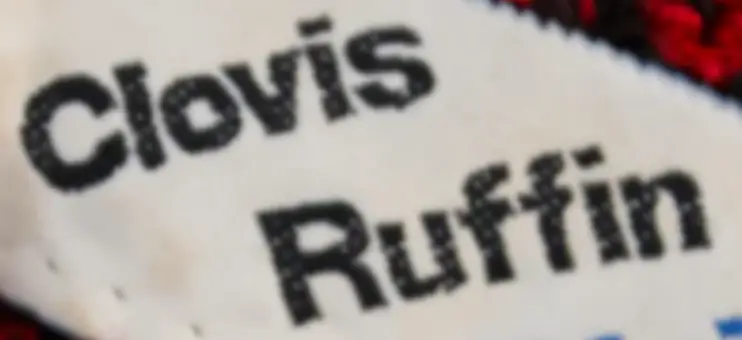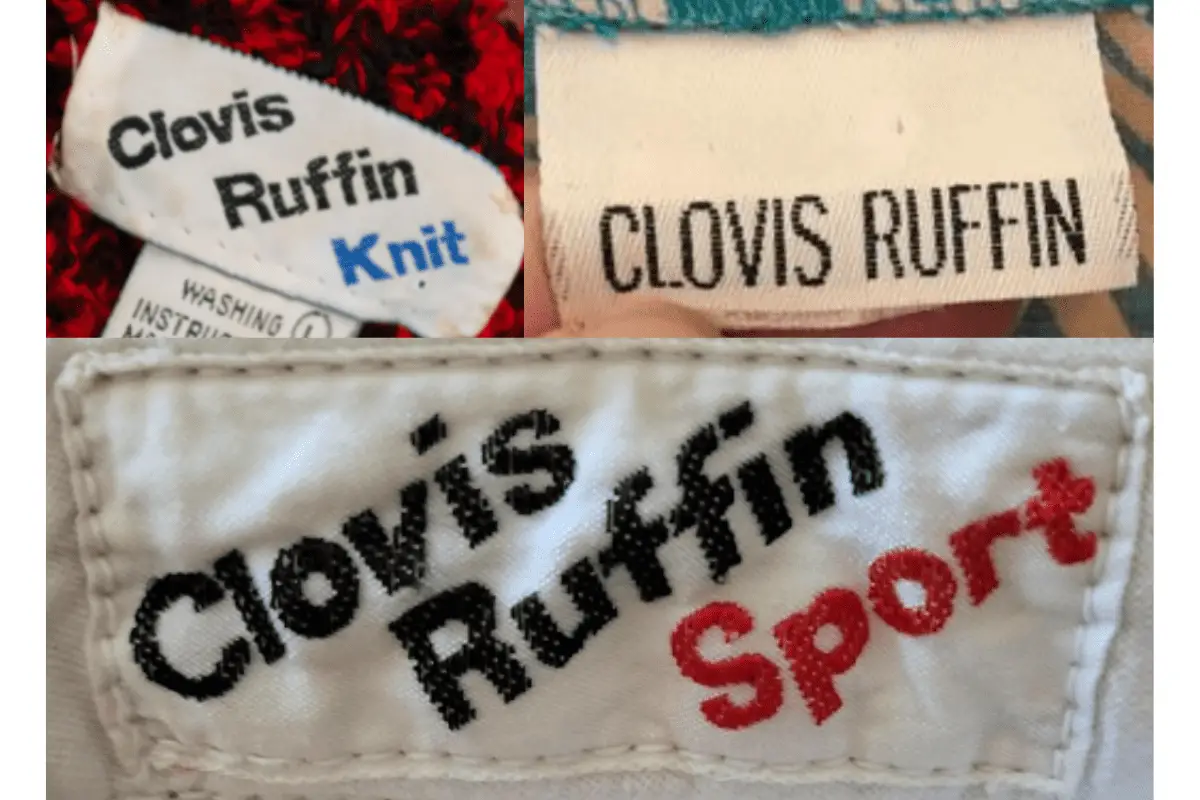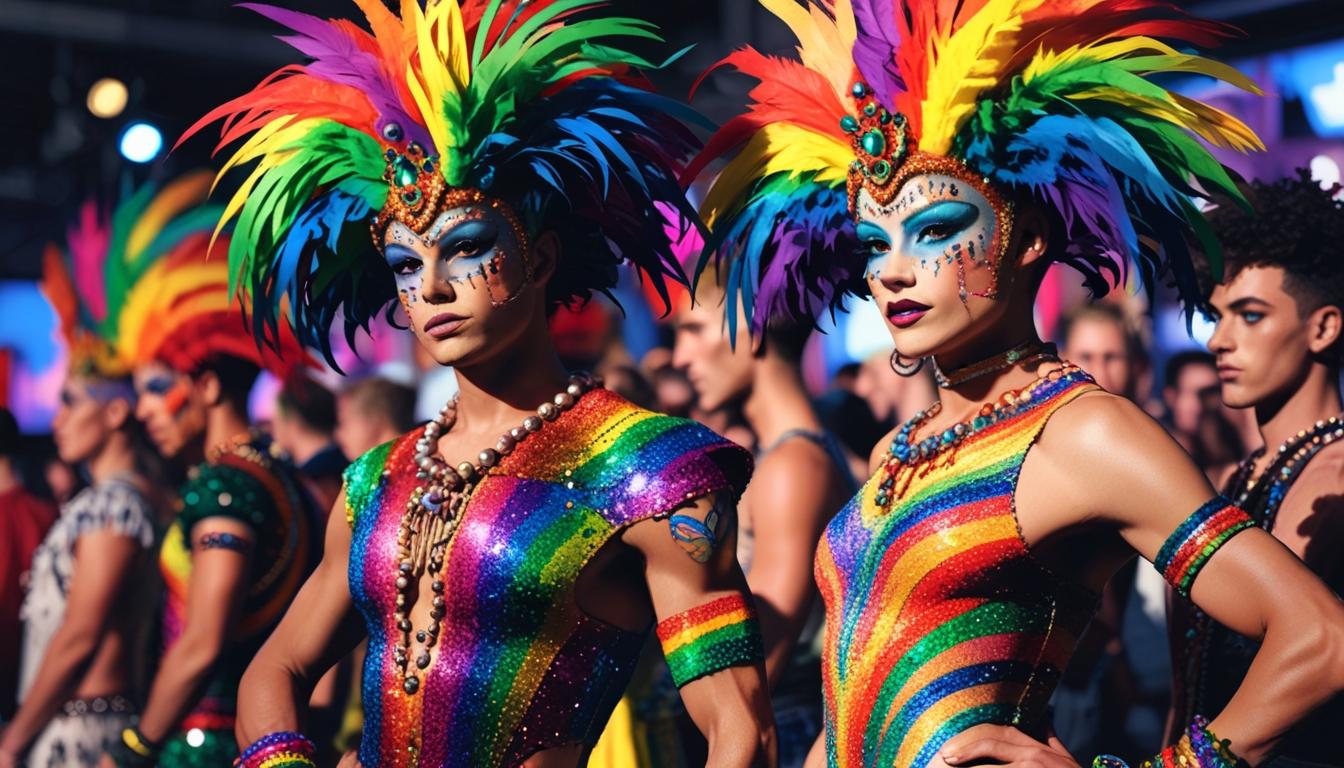Clovis Ruffin was a pioneering figure in American fashion, rising to prominence in the 1970s with his innovative approach to sportswear. Born in Clovis, New Mexico in 1946, Ruffin’s journey took him across continents, growing up in Egypt and Europe before settling in the United States. After honing his craft at prestigious institutions like the High School of Art and Design in Manhattan, Columbia University, and the Sorbonne in Paris, Ruffin made his mark on the fashion world. His debut catwalk presentation in 1972 quickly positioned him as a designer to watch, and by 1973, he became the youngest recipient of the coveted Coty Award. This recognition cemented his status as a leading voice in American sportswear, known for creating accessible yet stylish clothing for young, professional women.
Ruffin’s designs were celebrated for their simplicity and practicality, but with a bold, modern twist. He introduced the now-iconic T-shirt dress made from clinging fabrics, and his use of materials like terrycloth, along with bold stripes, became his signature. Ruffin’s ability to blend comfort with style made his creations appealing to a wide audience, from office workers to high-society figures like Jacqueline Kennedy Onassis. His work embodied the spirit of the American sportswear movement, offering affordable yet sophisticated day-to-evening wear that crossed generational and class boundaries. His early success, marked by nearly $5 million in sales by 1973, reflected his deep understanding of what modern women wanted from their wardrobes.
Beyond his fashion innovations, Ruffin was also a trailblazer in promoting diversity in the industry. He prominently featured Black models in his runway shows, challenging the norms of the time and helping to create a more inclusive fashion landscape. Throughout the 1980s, his designs evolved to include everything from affordable loungewear to luxurious evening dresses, showcasing his versatility and commitment to making fashion accessible. Clovis Ruffin’s legacy, though cut short by his untimely death in 1992, continues to inspire designers and vintage enthusiasts alike, cementing his place as a key figure in American fashion history.
60s Fashion in London’s King Street
How to tell if Clovis Ruffin is vintage from the logo
Clovis Ruffin was a well-known American fashion designer, especially popular in the 1970s and 1980s for his innovative and bold fashion designs. Over the years, the evolution of the Clovis Ruffin logo can help pinpoint the era a particular piece was from. By examining the typography and design details, we can trace when the clothing was produced. Below is a breakdown of the Clovis Ruffin logos from the 1970s and 1980s based on the images provided.
1970s Clovis Ruffin logo
- The logo uses a rounded and modern typeface.
- The text is tall and thin, with each letter being spaced distinctly from one another.
- The overall design feels minimal yet stylish, matching the fashion aesthetic of the 1970s.

1970s Clovis Ruffin logo
1980s Clovis Ruffin logo (1)
- The logo shifts to a more bold and blocky font style.
- The letters are thicker and closer together, reflecting the bold, dynamic trends of the 1980s.
- Unlike the earlier logo, this one appears to have more emphasis on legibility and impact.

1980s Clovis Ruffin logo 1
1980s Clovis Ruffin logo (2)
- This variation of the 1980s logo uses a similar bold font but with a slightly more italicized or slanted style.
- The font maintains its blocky appearance but has a more casual, dynamic feel compared to the previous version.
- The design may reflect a shift towards more relaxed, sporty designs in the brand’s clothing line.

1980s Clovis Ruffin logo 2
How to tell if Clovis Ruffin is vintage from the tags
The Clovis Ruffin brand experienced various changes throughout its evolution, marked by shifts in design and typography. Each decade introduced a unique style to the brand’s tags, reflecting trends and the fashion landscape of the time. As Clovis Ruffin’s popularity grew, so did the variety in materials and layouts of its clothing tags, making them a key identifier in determining the vintage authenticity of garments.
Struggling to identify vintage tags or labels? Submit a picture on our vintage tag identification page, and we’ll help you out!
1970s vintage Clovis Ruffin tags
- Simple and bold typography with a focus on the brand name, “Clovis Ruffin”.
- Some tags included additional indicators like “Knit” in blue, denoting the specific garment type.
- Typically small, rectangular tags with serif and bold sans-serif fonts.
- Commonly featured washing instructions on a separate smaller tag.

1970s Clovis Ruffin tags
1980s vintage Clovis Ruffin tags
- Introduction of more varied layouts with both minimalist and colorful designs.
- Tags like “Clovis Ruffin Sport” in bold black and red text became common, indicating different clothing lines.
- Experimentation with boutique-style designs like the “Clovis Ruffin Boutique” tag featuring delicate lettering and framed borders.
- Tags often had a unique mix of colors such as black, red, blue, or green, and some included special collections such as “Shirts” or “Ruffinwear”.

1980s Clovis Ruffin tags





????? ????? ?? ??????? Telegram-??? “???? ????”, ??? ??????? ???????? ? ?????????? ????? ???????? ????.
?????????? ????????????? ?? ?????? ????????, ??????????? ????????? ?????? ? ????. ????? ???? ????? ???????? ?????????? ????? ? ?????? ????? ?? ????.
?????????? ???????? ?? ?????? 2024 ? ???????? ?????????????? ??????. ??? ??????????? ????? ??????? ?? ??????????? ? ??????? ?????????? ?????????.
???? ????
?????? ?????? — ????????? ??????? ??? ???????? ??????? ????????.
Access detailed information about the Audemars Piguet Royal Oak Offshore 15710ST here , including pricing insights ranging from $34,566 to $36,200 for stainless steel models.
The 42mm timepiece features a robust design with mechanical precision and durability , crafted in stainless steel .
https://ap15710st.superpodium.com
Analyze secondary market data , where limited editions command premiums , alongside rare references from the 1970s.
Request real-time updates on availability, specifications, and resale performance , with trend reports for informed decisions.
Access detailed information about the Audemars Piguet Royal Oak Offshore 15710ST on this site , including market values ranging from $34,566 to $36,200 for stainless steel models.
The 42mm timepiece showcases a robust design with automatic movement and durability , crafted in stainless steel .
Authentic Piguet Royal Oak Offshore Diver 15710 price
Analyze secondary market data , where limited editions reach up to $750,000 , alongside pre-owned listings from the 1970s.
Request real-time updates on availability, specifications, and resale performance , with free market analyses for informed decisions.
Discover detailed information about the Audemars Piguet Royal Oak Offshore 15710ST here , including market values ranging from $34,566 to $36,200 for stainless steel models.
The 42mm timepiece boasts a robust design with automatic movement and durability , crafted in titanium.
Pre-Owned Audemars Piguet Royal Oak Offshore 15710 review
Compare secondary market data , where limited editions command premiums , alongside rare references from the 1970s.
Get real-time updates on availability, specifications, and investment returns , with free market analyses for informed decisions.